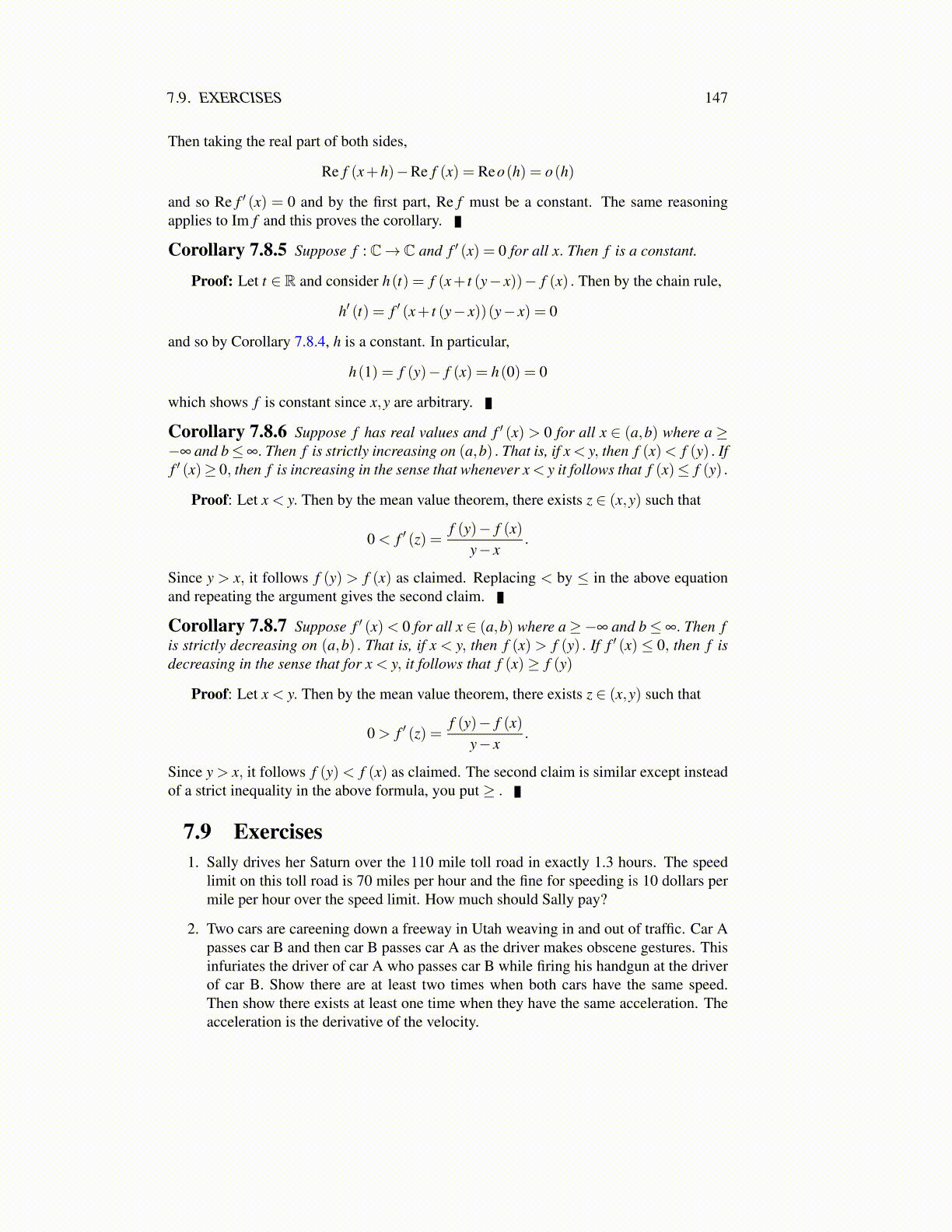
7.10. DERIVATIVES OF INVERSE FUNCTIONS 147
11. Let f be a real continuous function defined on the interval [0,1] . Also supposef (0) = 0 and f (1) = 1 and f ′ (t) exists for all t ∈ (0,1) . Show there exists n distinctpoints {si}n
i=1 of the interval such thatn
∑i=1
f ′ (si) = n.
Hint: Consider the mean value theorem applied to successive pairs in the followingsum.
f(
13
)− f (0)+ f
(23
)− f
(13
)+ f (1)− f
(23
)12. Now suppose f : [0,1]→ R is continuous and differentiable on (0,1) and f (0) = 0
while f (1) = 1. Show there are distinct points {si}ni=1 ⊆ (0,1) such that
n
∑i=1
(f ′ (si)
)−1= n.
Hint: Let 0 = t0 < t1 < · · · < tn = 1 and pick xi ∈ f−1 (ti) such that these xi areincreasing and xn = 1,x0 = 0. Explain why you can do this. Then argue
ti+1− ti = f (xi+1)− f (xi) = f ′ (si)(xi+1− xi)
and soxi+1− xi
ti+1− ti=
1f ′ (si)
Now choose the ti to be equally spaced.
13. Show that (x+1)3/2− x3/2 > 2 for all x ≥ 2. Explain why for n a natural numberlarger than or equal to 1, there exists a natural number m such that (n+1)3 >m2 > n3.Hint: Verify directly for n = 1 and use the above inequality to take care of the casewhere n≥ 2. This shows that between the cubes of any two natural numbers there isthe square of a natural number.
7.10 Derivatives of Inverse FunctionsIt happens that if f is a differentiable one to one function defined on an interval, [a,b] , andf ′ (x) exists and is non zero then the inverse function f−1 has a derivative at the point f (x) .Recall that f−1 is defined according to the formula
f−1 ( f (x)) = x.
Let f : [a,b]→ R be a continuous function. Recall from Theorem 7.5.1
f ′ (a)≡ limx→a+
f (x)− f (a)x−a
, f ′ (b)≡ limx→b−
f (x)− f (b)x−b
.
Recall the notation x→ a+ means that only x > a are considered in the definition oflimit, the notation x→ b− defined similarly. Thus, this definition includes the derivative off at the endpoints of the interval and to save notation,
f ′ (x1)≡ limx→x1
f (x)− f (x1)
x− x1
where it is understood that x is always in [a,b] .